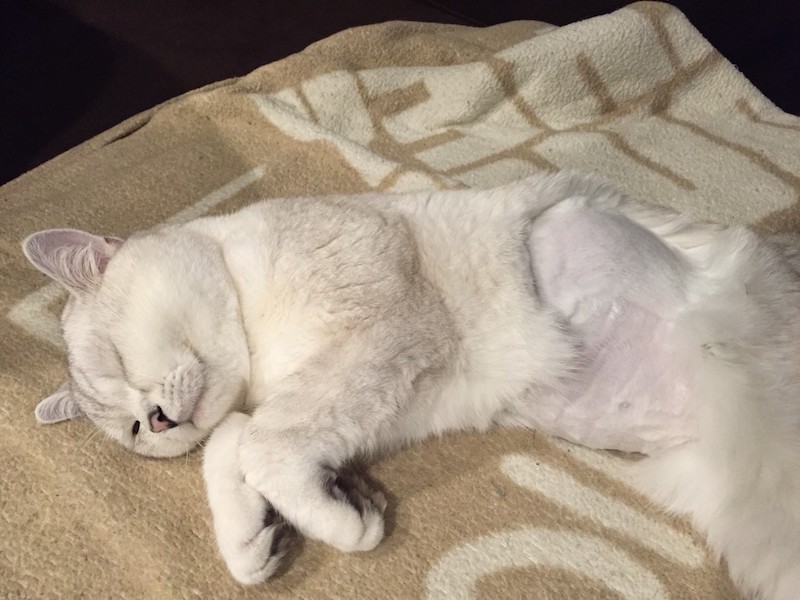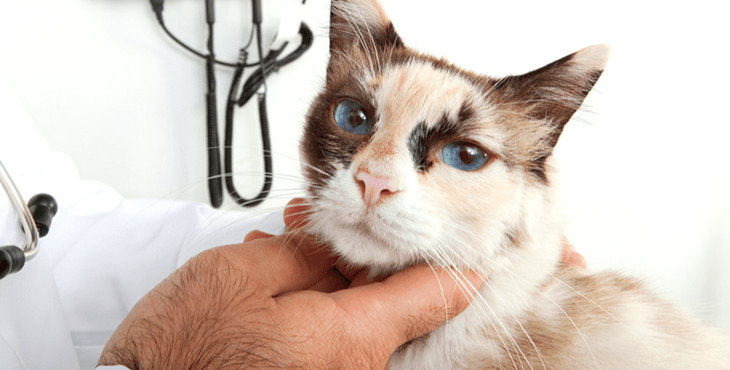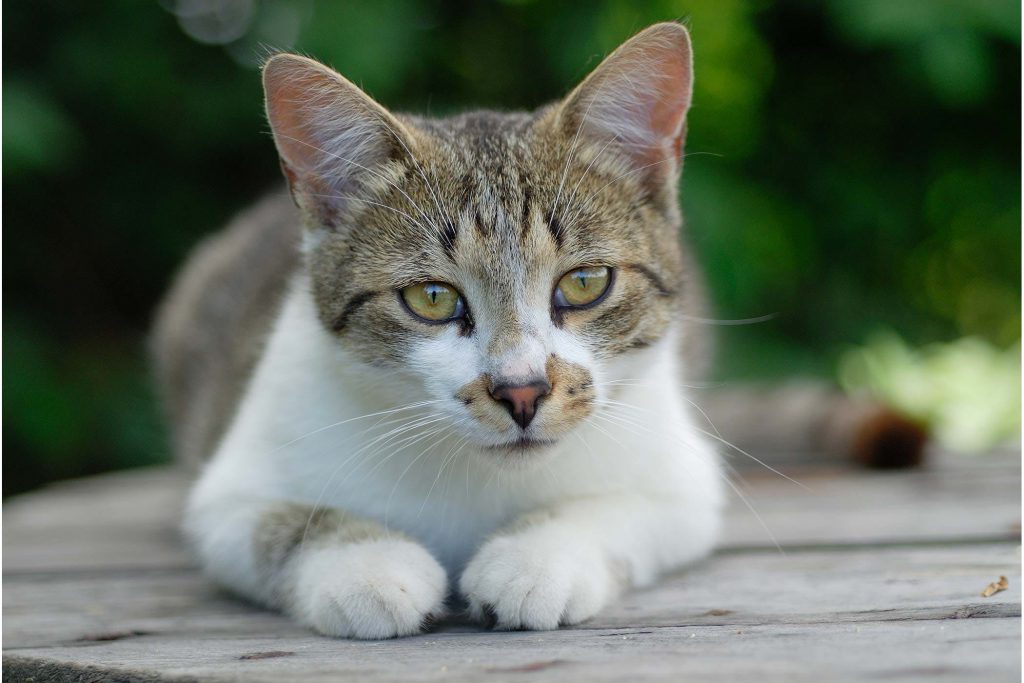
Cat Cancer | Types, Symptoms, Basic Prevention & Treatment
Contents
Cat Cancer
The improvements in the prevention and treatment of infections, parasites, and nutritional diseases have lengthened the life span of our pets. Consequently, a cat living into its middle and later years will develop other health problems. Probably the most dreaded disease of mid- and later life is cancer (although there are some cancers, such as lymph sarcoma [leukemia] that affect primarily younger cats). Yearly. There are almost 160 new cases of cancer per 100,000 cats.

Cancer begins as a biologically abnormal change in a single cell in one of your pet’s organs. This cell divides repeatedly, producing more abnormal cells. These new cells also divide at an extremely rapid rate and cannot be stopped by your cat’s normal internal monitoring system, which makes normal cells behave. These abnormal cells are biologically destructive: they form solid tumors and invade and destroy surrounding tissue.
Malignant tumors produce chemical substances that aid the cellular destruction and help stimulate a blood supply (to obtain oxygen and nutrition) for the tumors. Malignant cells frequently spread throughout the body by way of veins or lymph vessels and thus bring their destructive ways to other organs in your cat’s body. This process is called metastasis.
What is Cat Cancer?
Why should normal cells in your cat’s body suddenly transform into malignant cells? Researchers feel that cancer is caused by one or more of the following factors: contact with harmful environmental agents, heredity, viruses, immunologic factors, or body hormones.
Cat Cancer – Harmful Environmental Agents
Chemical carcinogens (agents that produce cat cancer) are being identified in our air, water, and food. Our pets share this unhealthy environment and share the carcinogens, most of which alter cellular genetic material. Asbestos workers and cigarette smokers have a high incidence of lung cancer. Since cats don’t smoke and don’t work – especially around asbestos they have a very low incidence of lung cancer. However, white cats that are excessively exposed to sunshine have a high incidence of skin cancer, just as do fair-skinned humans.
Heredity
Certain breeds seem to have a predisposition for and a high incidence of specific cancers.
Viruses
Tumor-causing viruses are being identified. These viruses change the genetic code in cells, transforming them into malignant cells. The most publicized cat cancer-inducing virus is the feline leukemia virus.
Immunologic Factors
Tumor cells have antigens on their surfaces. Your cat’s immune system (antibodies, lymphocytes, and macrophages) recognizes these foreign cells and attempts to destroy them. It has been speculated that our pets (and our bodies) produce cancer cells quite often but the immunologic defenses in healthy humans and cats destroy these cells before they can get established. This is called immunologic surveillance. If the immune system fails for any reason, the cancer cells can start their destruction.
Body Hormones
Although it has not been established empirically, having an ovariohysterectomy for your cat before her first heat may help avert breast cancer in later years.
Cat Cancer will be prevented only when we understand how and why these factors cause normal cells to transform into cancer cells. For example, if air pollution and smoking induce lung cancer in humans, why don’t all exposed humans develop cancer?

If your pet develops cancer, don’t feel that all is hopeless. In many cases, modern veterinary medicine, just like human medicine, has therapy available to help your pet. The chance for a cure or remission will depend on the type of tumor, its location(s), the type of therapy used, and your cat’s general health (for example, whether general anesthesia or chemotherapy can be tolerated).
First, you and your doctor must be sure that your cat has cancer. Most types of cat cancer cannot be diagnosed by looking at your pet. Some of the signs, such as loss of appetite, gradual weight loss, weakness, lumps in the abdomen, and even ugly skin growths, could indicate a simpler problem.
Your doctor must perform certain tests and take radiographs to verify that cat cancer is present, to determine the type and extent of cat cancer, and to decide on the best type of treatment, if any, for the malignancy. Your veterinarian may select some or all of these diagnostic tools to give you a clear assessment of your cat’s situation.
Once the lab tests and X-rays have been studied, the doctor can determine the next step. If there is cat cancer and it is treatable, you should receive the following information so that you and your doctor can reach a common understanding and decision in your cat’s best interest.
Cat Cancer Treatments –

– What are the chances for a cure or remission?
– If we can expect a remission, how much time does this give my cat to live free of pain and discomfort?
– What type of therapy will be used?
– What are the side effects of the therapy?
– What is the cost of the therapy?
– How much of my time will be taken up by visits to the veterinary hospital for therapy and follow-up exams?
– Is there any new cat cancer therapy that will not cause my cat discomfort and that may benefit it and contribute to current human cancer studies?
Therapy
At present, there are five modes of therapy, effective either singly or in combination, used to treat various cancers in different stages of development: surgery, chemotherapy, radiation therapy, cryosurgery, and immunotherapy.
Surgery
This is the major method to diagnose and treat cat cancer. The major drawback is that a microscopic number of tumor cells that may be left behind can spread and cause a relapse. If there is a high risk of relapse, or if the entire tumor cannot be successfully removed, one or more of the other modes of therapy may also be used.
Chemotherapy
The hope of chemotherapy is in using a drug or chemical agent that will kill tumor cells while doing as little damage as possible to your cat’s healthy cells. The drawbacks of chemotherapy are its expense (unless the therapy is supported by government grants to a university or private veterinary medical center) and the potential toxic effects on healthy tissue.
Radiation Therapy
Radiation therapy is an important and effective mode of cancer treatment in inhuman medicine. It is now being recognized as an important form of general cancer therapy. Unfortunately, the cost of the equipment and facilities has limited its use to university and private veterinary medical centers.

The cells of certain tumors seem to be more susceptible to therapeutic doses of ionizing radiation. These ions seem to kill tumor cells by disrupting their code of life the DNA and chromosomes. The cells die when their attempt at division is ineffective. Susceptible tumors are termed radiosensitive.
Cryosurgery
Certain tumors especially some skin and mouth tumors have been successfully treated with cryosurgery. This is a technique using liquid nitrogen or a compressed gas such as a nitrous oxide to kill tumor cells by alternately freezing and thawing the tissue. A temporary but odorous and oozing wound is the main disadvantage until healing occurs.
Immunotherapy
A new form of therapy that seems to hold some promise, especially when combined with surgical treatment, is immunotherapy. Your own and your pet’s immune system protects the body against foreign cells such as bacteria, viruses, and tumor cells. In cancer, the immune system is suppressed or blocked from destroying the tumor cells. Certain biological and chemical substances called immune adjuvant are being used to stimulate the immune system in hopes of getting remissions in breast cancer.

Early diagnosis and treatment are most important if therapy is to be successful. If your cat is over five years old and you suspect the presence of cancer, see your veterinarian.
Most cat owners are willing to prolong their pet’s life if it will be free of pain and suffering. If you and your veterinarian reach an understanding that this is not possible, it is in your pet’s best interest to administer euthanasia. In this way, pets do not have to suffer through the pain and misery of cat cancer that has spread throughout the body.
But please consider euthanasia only as one option. Just like heart disease, cancer can be considered a chronic illness that can, in many cases, be controlled – that is, your cat can live free of pain and discomfort. Euthanasia should be used only if treatment has failed or if your cat has a form of cancer that is completely hopeless.
Skin cancer, lymph sarcoma, and breast cancer are three forms of cat cancer commonly seen in cats.
